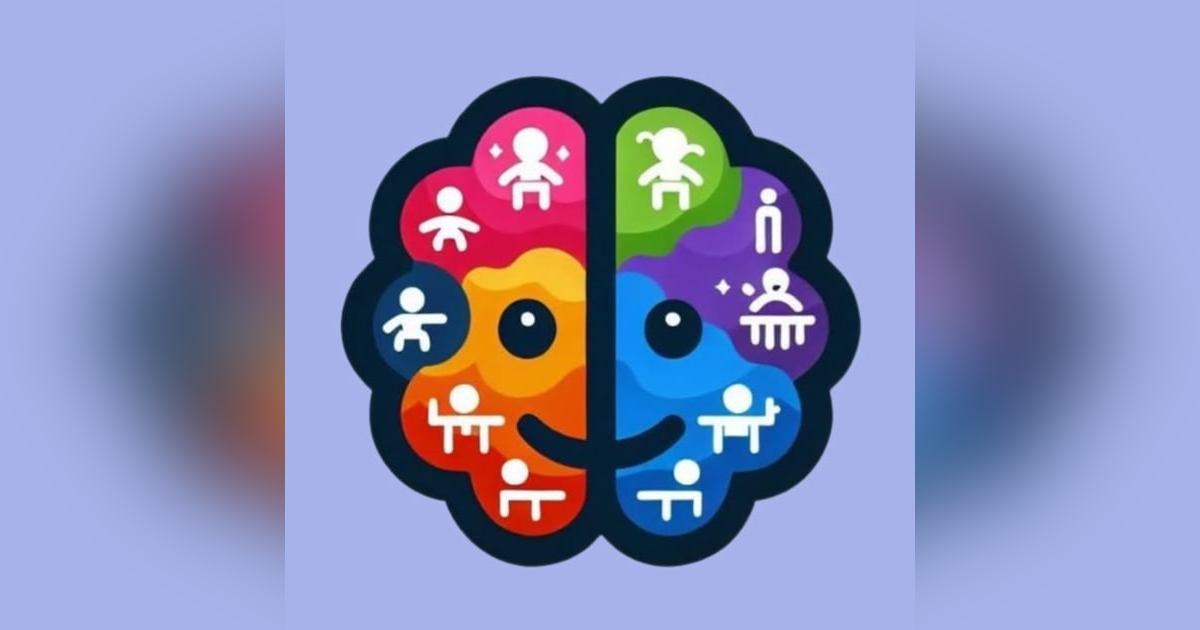Episode 7 - Supporting Students with OCD or OCPD

OCD and OCPD are often confused—but they’re fundamentally different. In this episode, we break down the psychological and behavioural distinctions between obsessive-compulsive disorder (OCD) and obsessive-compulsive personality disorder (OCPD), and why understanding these differences is crucial in the classroom.
Charlotte and Carla explore how each can affect student behaviour, engagement, and wellbeing—and share practical strategies for managing anxiety, perfectionism, and rigid thinking at school. From Exposure and Response Prevention (ERP) to flexible success criteria and reflective journaling, this episode is packed with tools and case studies to support inclusive, compassionate teaching.
#ThinkDifferentTeachBetter
#OCDinTheClassroom
#OCDinThe Classroom
#OCPDexplained
#NeurodiversityInEducation
#TeacherPodcast
#InclusiveTeaching
#MentalHealthAwareness
#TraumaInformedTeaching
#SupportAllStudents
#PrimaryTeacherTools
#FlexibleTeaching
#MindfulEducation
#ObsessiveCompulsiveDisorder
#PerfectionismInStudents
#EmpoweredEducation
#EducationalPsychology
🎙️ Episode 7 Transcript
Understanding OCD vs OCPD and Supporting Students in the Classroom
From the Think Different, Teach Better Podcast with Charlotte & Carla
🔹 1. Introduction
Carla:
Welcome back to Think Different, Teach Better! In previous episodes, we've explored topics like Autism, ADHD, Dyslexia, Dyscalculia, and Dysgraphia. Today, we’re focusing on a commonly misunderstood area: Obsessive-Compulsive Disorder (OCD) and Obsessive-Compulsive Personality Disorder (OCPD). While the two are often confused, they are fundamentally different—and knowing how to tell them apart helps us support students more effectively.
🔹 2. Understanding OCD and OCPD
Charlotte:
Let’s start with definitions:
-
OCD involves intrusive, distressing thoughts (obsessions) and repetitive behaviours (compulsions) performed to relieve anxiety.
Example: Repeatedly checking if the door is locked or excessive hand washing. -
OCPD, on the other hand, is a personality style marked by perfectionism, control, and rigid thinking. These behaviours are usually seen as correct or even necessary by the person.
Example: Insisting work be done “the right way,” extreme rule-following, or struggling to delegate.
Key Difference:
-
OCD is ego-dystonic – the person knows their thoughts/behaviours are irrational
-
OCPD is ego-syntonic – the person sees their behaviours as right or justified
🔹 3. Challenges in the Classroom
Charlotte:
🧠 Students with OCD may:
-
Become distressed if they can’t complete rituals
-
Take longer to start tasks due to obsessive thoughts
-
Struggle with concentration due to intrusive thoughts
📝 Students with OCPD traits may:
-
Struggle with group work due to a need for control
-
Fixate on perfection, leading to procrastination
-
Become upset when things are done differently than expected
These behaviours are often misunderstood as defiance or laziness—so awareness is key.
🔹 4. Effective Strategies
✅ General Strategies (for both):
-
Build a predictable, calm environment
-
Normalise mistakes as part of learning
-
Use structured routines with clear expectations
🛠️ For OCD:
1. Externalise the OCD
-
Help students name the OCD (e.g. “bully brain,” “worry monster”)
-
Encourage them to “talk back” to the thought (“I don’t need to do that now”)
2. Preview Changes
-
Give advance notice for transitions
-
Use visual schedules or first/then charts
3. Time-Limited Tasks
-
Gently set time limits (e.g., “Let’s aim to finish this in 10 minutes, even if it’s not perfect”)
4. Encourage Self-Monitoring
-
Use a 1–5 anxiety rating scale before/after tasks
5. Offer “OCD Break Cards” or Calm Spaces
-
Allow discreet breaks and a plan to return when calm
📚 For OCPD Traits:
1. Use Flexible Success Criteria
-
Show examples of “good enough” work
-
Praise effort, risk-taking, and flexibility
2. Scaffold Group Work
-
Assign rotating roles
-
Structure collaboration intentionally
3. Promote Reflective Journals
-
Ask: “What went well even though it wasn’t perfect?”
4. Role Model Mistakes
-
Share your own mistakes openly
-
Celebrate progress over perfection
5. Gradual Desensitisation
-
Introduce small, harmless “mistakes” and discuss why they’re okay
🧘 Emotional Regulation & Community Support (For Both)
1. Create a Calm Culture
-
Use breathing exercises, visualisations, or mindfulness
2. Reduce Cognitive Load
-
Chunk instructions
-
Offer checklists and clear steps
3. Collaborate with Families and Support Teams
-
Keep communication open
-
Align school support with outside therapists
4. Reframe Reassurance
Instead of “Don’t worry,” try:
-
“What could we do if that worry came up again?”
-
“Let’s make a plan together.”
🔹 5. Case Studies
Carla:
I worked with a Year 5 student who would rewrite her heading over and over until it was perfect, often not starting the actual task. We shifted the focus to effort over presentation and allowed typed responses. Her productivity and confidence both improved.
Charlotte:
I supported a student with compulsive checking—especially locks. By gently increasing the delay between checks and openly discussing the behaviour, we gradually reduced the compulsions at school.
🔹 6. Resources
📖 Books:
-
The Anxious Generation – Jonathan Haidt
-
Treating Obsessive-Compulsive Disorder – Abramowitz et al.
🌐 Websites & Tools:
🧰 Therapy & Screening:
-
ERP-trained psychologists
-
Movement ABC-2 and DASH assessments
-
School wellbeing teams
🔹 7. Engagement
Have you supported a student with OCD or OCPD traits? What strategies worked for you?
💌 Email us: thinkdifferentteachbetter@gmail.com
📱 Instagram: @thinkdifferentteachbetter
🎧 Don’t forget to subscribe and join us for Episode 8, where we’ll explore Tourette Syndrome and Tic Disorder in inclusive classrooms.